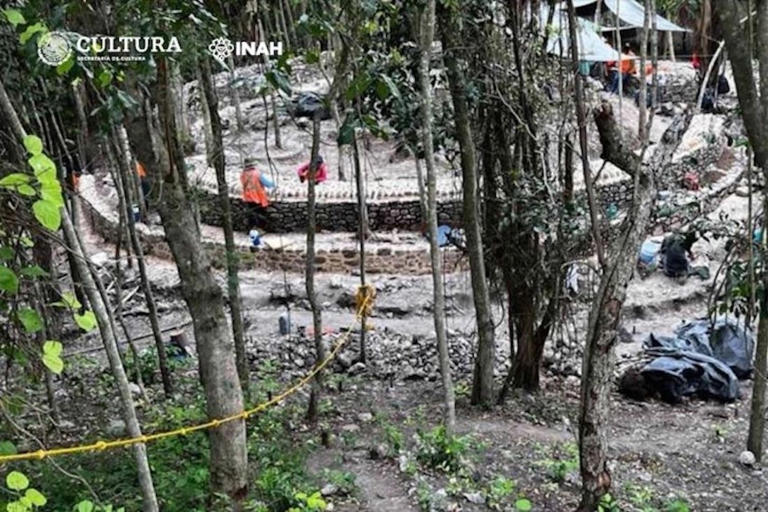
While El Tigre in Campeche State has often been in the shadow of more renowned Maya sites such as Chichen Itza and Palenque, recent archaeological findings have been yielding new fascinating discoveries. In the midst of these lesser-explored ruins, researchers have unveiled a previously concealed circular structure. This newly discovered architectural wonder dates back to a period spanning from 1000 to 1200 AD and appears to be intricately linked with the reverence of Kukulcán, the Maya equivalent of the Aztec wind god Ehécatl-Quetzalcóatl. This revelation offers a deeper understanding of the spiritual significance and prominence of El Tigre in the broader Maya cultural landscape. The roughly 1,000-year-old temple was found in El Tigre, an archaeological site in the Yucatán Peninsula, and served as one of the ancient Maya’s last settlements before the civilization collapsed, according to a translated National Institute of Anthropology and History (INAH) statement.
Excavations revealed that the circular structure contained two levels and would’ve been capped off with a flat roof at one time. Archaeologists believe the El Tigre site is the same as an old Maya settlement known as Itzamkanac. This place was dedicated to the snake god Kukulcán. The round building most likely served as a temple for this god, who was similar to the wind god Ehécatl-Quetzalcóatl in that region.
Circular structures often held religious and spiritual importance. Many ancient temples, shrines, and ceremonial sites were designed in circular or semi-circular forms, reflecting the sacred nature of the space and the connection to the divine. Another aspect is the acoustical properties. Circular structures can provide enhanced acoustic properties, which makes them suitable for theaters, amphitheaters, and other performance spaces. The curved walls and domed roofs could help amplify sound and improve the listening experience for audiences. In addition, many have astronomical significance. Some circular structures were built with careful astronomical alignment in mind. For example, ancient observatories and calendars, like Stonehenge in England, featured circular layouts designed to track celestial events and mark important dates. Sometimes, weather considerations also played a practical part in the round design. Wind and tsunami waves move naturally around a round building rather than getting caught at corners.
INAH.
